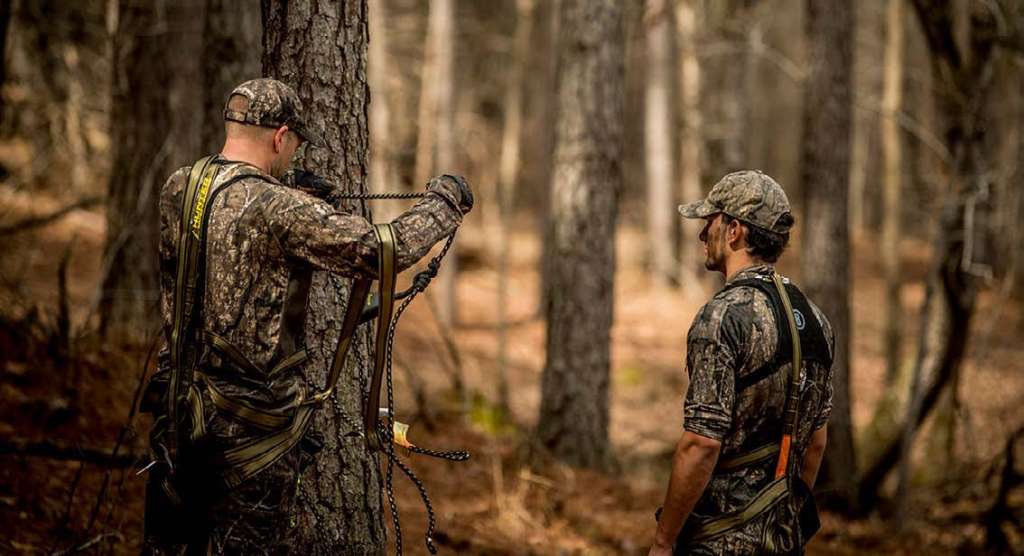Things to Learn and Keep in Mind Before Hunting High-Country Whitetails
As a Central Kentucky native, I don’t live in the mountains. Eastern Kentucky has plenty of mountains, but they’re not located here. In this part of the world, the landscape is intermittent timber with open areas along rolling hills.
One of the best things I’ve done to improve myself as a deer hunter is to hunt different terrain types. In the past decade, I’ve challenged myself by hunting Whitetails in other terrain types—such as the plains of Western Kansas, the swamps of South Carolina, the grain ground of the Midwest, and even the big woods, mountainous topography of Eastern Ohio.
I’ve spent three seasons now in Eastern Ohio, tagging two great bucks during that time. I should have harvested three—if not for a missed opportunity during the 2020-21 season. Still, I have learned a lot of valuable lessons while there and I hope to learn more in the future. Here are some of the lessons I’ve already banked and benefitted from.
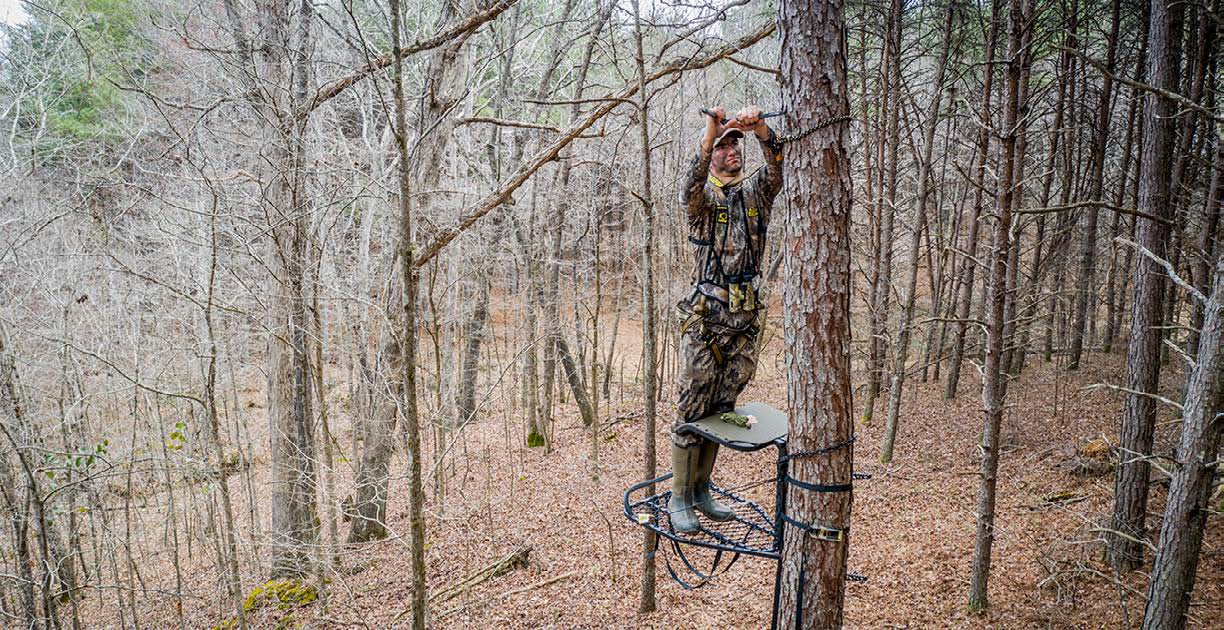
Get In Shape
If you can’t walk up a hill, you can’t walk up a mountain. And you certainly can’t do it in an agile way or frequently enough to effectively hunt Whitetails. So, if you plan to hunt deer in the mountains, start working on getting into shape. You don’t have to become the greatest strength trainer or long-distance runner. Just work to improve yourself as best as you can.
Conduct Post-Season Scouting
Summertime scouting is very beneficial for taking herd inventory and for determining patterns that might still be in play during the early season. However, it does very little for the pre-rut, rut, and late season. That’s why post- season scouting (especially in February and March) is so important.
At this time, you can still see deer sign from the recent season. Sheds, trails, tracks, rubs, scrapes, and especially beds are still visible and present on the landscape. Charting these findings on an app or map is a great way to paint a picture of how deer are using the property during the pre-rut, rut, and late season.
Know the Hunters
Another important aspect of hunting is knowing how nearby people use and hunt the area. For example, very few people are willing to access places they can’t get to via an ATV and a short walk. If it involves a long hike, few hunters will go there. This is doubly true if that hike is up steep hills or mountains. But that’s exactly why you’re interested in being the go-to — because no one else will.

Know the Food
There aren’t many ag fields or food plots in mountain country. If you’re able to plant something for deer, it can have huge drawing power. If that’s out of the question, finding natural food sources is extremely important. Hard mast, soft mast, grasses, forbs, and browse are all very important parts of the menu, season depending. Know where these food sources are located, you’re on your way to finding the bulk of the local deer.
Know the Bedding
Likewise, it’s very important to know where deer are bedding. They don’t always bed in the same location. Mountain country offers a greater abundance of bedding area opportunities than most terrain types do. Bedding area selections are also influenced by the successional stage of the habitat, the time of year, slope orientation, food sources, hunting pressure, and other issues. Being able to analyze each of these factors and how they impact where deer spend their daylight hours is an important part of the puzzle.
Locate Topography-Based Hotspots
Deer are impacted significantly by topography. It influences where they bed, feed, water, and how they travel from point A to point B. Being able to identify topography-based hotspots via an app or map is very important. Some of these include benches, drainages, hubs, leeward ridges, ridge endings, saddles, seeps, solar bedding (south-facing slopes), etc. These spots and more can be excellent places to intercept deer movement.
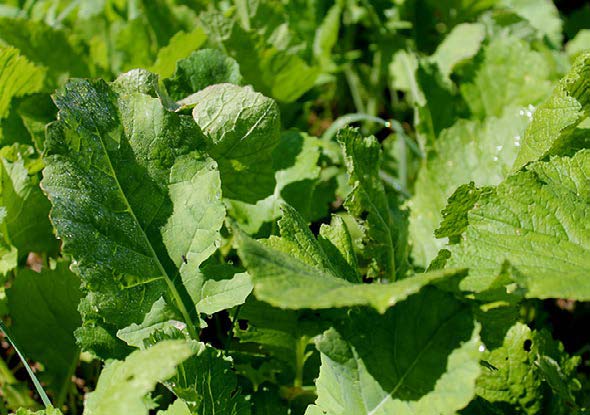
Locate Habitat-Based Hotspots
Similarly, there are habitat-based hotspots, too. These areas are less about topography and more about the flora that’s on the landscape and how it’s carved out. Some places to remember include overgrown clear- cuts, early successional growth, edge cover, inside field corners, isolated pockets of cover, mast-producing trees, oxbows, thermal bedding (dense cedars and other conifers), and so on.
Understand Seasonal Shifts
Every deer herd goes through a seasonal shift, no matter where it’s located. However, hunting deer in the mountains seems to bring this to a new level. Some things that are influenced by time of year include food sources, bedding area, hunting pressure, and (of course) the rut. Knowing when and where food sources hit their peak, when certain bedding areas have maximum drawing power, when hunting pressure intensifies, and exactly when and where the rut rocks the hardest are all things to know (and more importantly, to anticipate).
Scout with Purpose
Every trip afield should be meticulously planned. Don’t just walk in circles and down trails for the sake of it. If you’re truly there to learn and improve your hunting, you must scout with a purpose. Scour the landscape and mark all findings on an app or map. Charting trail networks on an aerial map, and marking beds, rubs, and scrapes will really show you how deer tend to use the area. This information will reveal key treestand locations.

Find the ‘X’
This is a common duck hunting term, but it applies to deer hunting, too, especially in areas with an endless sea of cover. Scouting with a purpose helps reveal the exact locations for your focus. Every property, no matter how big or small, has two or three small locations that offer the best odds of success. Find those. Then, have precise treestand locations that cover these spots.
Pack the Right Gear
Hunting in the mountains is no easy task. Having the right gear for overall effectiveness and safety is very important. Being prepared is key. However, packing light is important, too. You don’t need unnecessary gear. But you should cut as much weight as possible by using the lightest possible versions of your needs, wiithout sacrificing quality.
Get Creative with Entry and Exit Routes
Deer can see well in steep terrain. In mountain country, while thick cover can shield you from their eyes, deer generally have the high ground. Because of this, walking across open areas or approaching deer without using topography and terrain to your advantage can spook deer before you ever get close. This makes knowing exactly where deer bed even more important. You need to find the best possible entry and exit routes when going to and from stand locations.
On the flip side, it’s important to understand that you will spook some deer. In mountain country, deer are scattered throughout the landscape in pockets of good bedding cover. So, while best avoided, there might be no way to avoid spooking a doe or young buck as you ease into position to hunt the mature bucks in the area. Typically, the bucks take the best bedding and that often requires pushing past lesser bedding that’s inhabited by does and younger bucks. Of course, mature bucks could be there, too—which is why it’s best to start on the fringes and hunt inward. (That’s whether this is a still-hunting approach, or better yet, easing deeper into a property day by day via stand-hunting.)
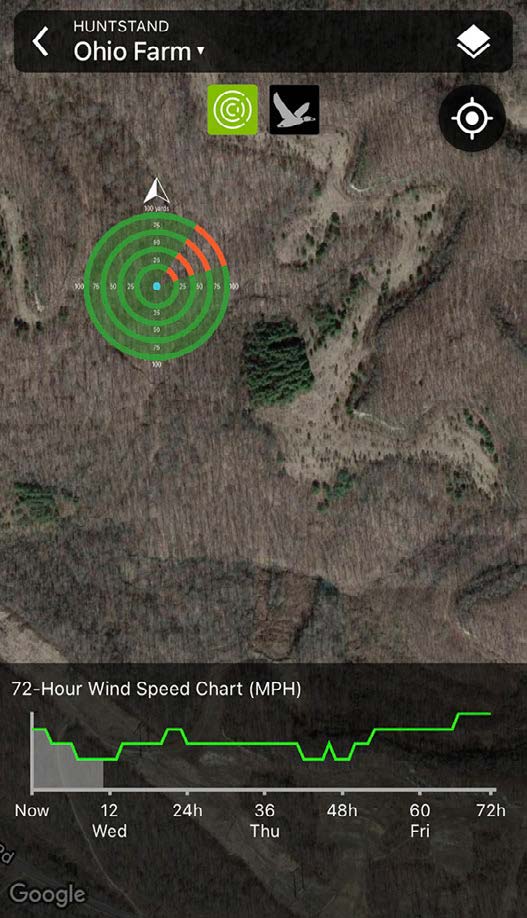
|
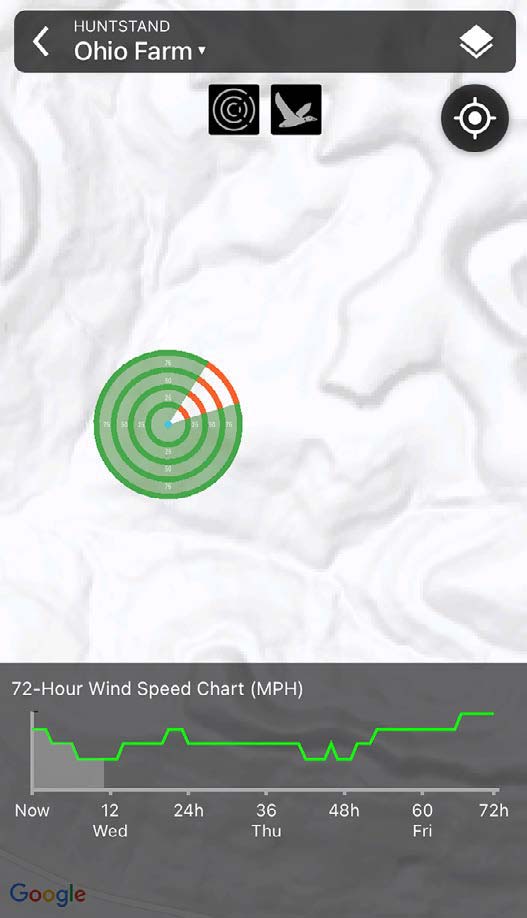
|
|
A good hunting app is worth a lot anywhere you hunt, but especially in mountain country. |
|
Understand Thermals and Winds
Understanding how air particles flow throughout the landscape is even more important in mountain country than most other types of landscapes. First, monitor primary wind directions. Keep an eye on wind directions and use trail cameras and in-the-field sightings to determine how, when, and where deer bed, feed, water, and otherwise travel. All of that is relative tocertain areas in relation to the wind direction at that given time.
Secondly, remember that it rarely blows in the direction the weather predictions say it’s blowing, or that it will. Terrain greatly influences wind direction. For example, if a valley runs due north and south, and the predicted wind is out of the northwest, it’s probably going to blow north to south in the valley and along the side ridges. However, the wind will likely only blow true northwest at the very tops of the highest ridgelines. Why? Wind flows with the landscape. It’s much like water in that way. The movements between wind and water are very synonymous in how they rise, fall, and flow.
Third, know that thermals carry scent upward and downward based on conditions. When air is heating, thermals carry scent upward. When air is cooling, thermals pull scent downward. When primary winds and thermals aren’t heavy, water thermals can even come into play, and scent can fall toward rivers, creeks, and streams and flow downstream above the water.
Fourth: Come to terms with the fact that wind shifts are inevitable. When you’re hunting buck in the mountains, winds rarely stay the same for very long. If you climb out of the treestand every time the wind shifts, you won’t be sitting for very long. Because of this, with wind, you’re more at the mercy of chance and happenstance than you are in flatter terrain, such as in the Midwest. That doesn’t mean you shouldn’t monitor the wind and hunt accordingly. You should; but don’t call it quits every time the wind shifts or you’ll never kill anything.
Worry Less About Pressuring Stand Locations
In my experience, hill country and mountain bucks are slightly more random in their bedding, feeding, and travel behavior than those living in other terrain types. Because of this, it’s important to focus on hotspots mentioned above to intercept deer in these seas of vegetation. On properties with few such places, it might mean repetitive sits in fewer stand locations. But if you have good entry and exit routes, and aren’t spooking target deer, that’s okay.
Design an Extraction Plan
Getting deer out of the hills and mountains isn’t easy. It becomes exponentially harder to get that hard-earned venison back to the truck if a big ridge or two separates you from the nearest road. That said, have a plan ready to get that deer out of the backcountry. If it’s too difficult to drag a deer out, I tend to bone it out right where I recover it and carry the meat out in my pack.
Have Contingency Plans
In summary, deer don’t read scripts. Plans oftentimes fail. Unexpected things happen. Have numerous backup plans in place for each phase of the deer season. Do this and you’ll be well prepared to have the best deer season of your life this fall.
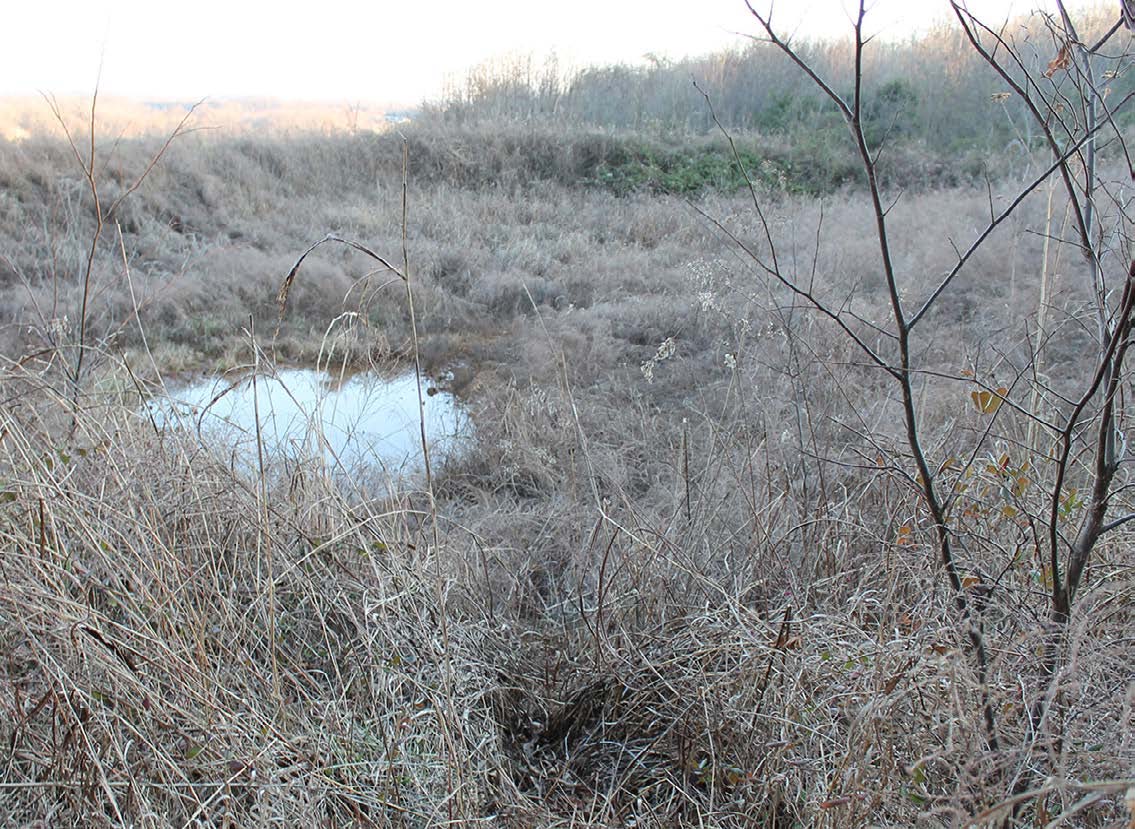
SWEAT MANAGEMENT
One of the most important aspects of hunting mountain bucks is controlling how much you sweat. It’s easy to get sweaty and smelly when hiking in rugged, steep terrain. That’s why it is even more important to take it slow. Don’t let yourself get to that sweaty place. Walk very slowly and take plenty of breaks. This not only reduces how much you sweat, but it also slows your approach so that the risk of spooking deer visually or audibly decreases.
It’s also good to have a good scent management plan in place. For example, it’s good to wash your hunting clothes with scent-reduction soap. Keep them in an air-tight container until it is time to get dressed. Then, keep your outermost layer in your pack until you get to the stand. Once there, put it on right before climbing up the tree. It’s also good practice to use a scent-reduction spray to help minimize scent on your clothing and gear. There are several companies, such as Dead Down Wind, that make products for these things.
AN APP FOR THAT
There are many important aspects that affect hunting in mountain country. The most important is topography. Finding key topographic-based hotspots is an important aspect of consistently finding and tagging mature deer.
For those who plan to hunt in the high country, a hunting app, such as HuntStand, is a major help. A variety of layers can help hunters pinpoint potential places to target deer. Some of these include aerial, topo, hybrid, 3D, and other layers. Such apps also allow you to place markers and waypoints for findings that you come across while scouting and hunting.
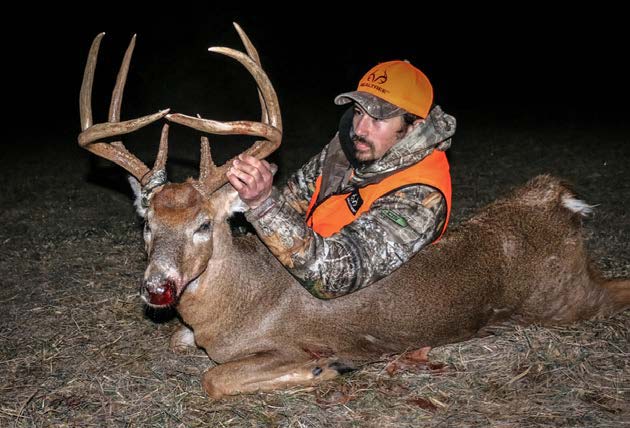
HIT THE HIGH SPOTS
Ease of access is often a direct link to hunting pressure. If it’s easy to navigate, more hunters will be there. If it’s harder to climb, you’ll have less competition. The Hunting Public’s Aaron Warbritton sees this every season.
“I like looking for spots where there is a steep climb in or out,” Warbritton says. “We talked to some locals while hunting Georgia and asked if anybody ever packed out deer on their back. When they said they hadn’t seen that, we figured we better head for the steep stuff—spots where the only way to recover a deer would be to quarter it and pack it out. Immediately, we began finding deer and eventually some mature bucks, places where we’ve had to go up and over a steep ridge with no trail system. Look for low road access points where hunters must go up. Then, be prepared to climb.”
LEEWARD RIDGE WONDERS
One of the most important aspects of mountain deer hunting is topography, plusfocusing on areas with the highest odds. According to The Hunting Beast founder Dan Infalt, leeward ridges are some of those.
“For bucks in hilly or mountainous terrain, look for bucks to bed on leeward hillsides, and on leeward sides of benches and points,” Infalt says. ”You can literally knock down a large section of land really quickly by studying a topo map and only concentrating near these terrain features.”
Per our affiliate disclosure, we may earn revenue from the products available on this page. To learn more about how we test gear, click here.



